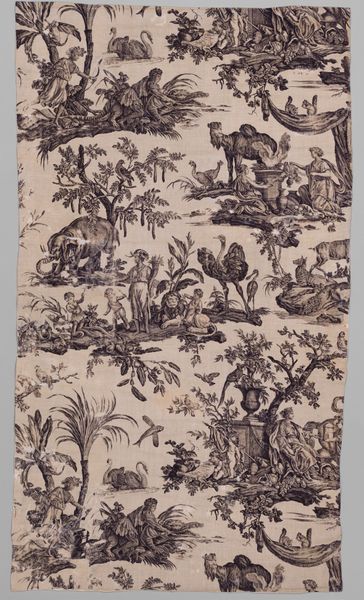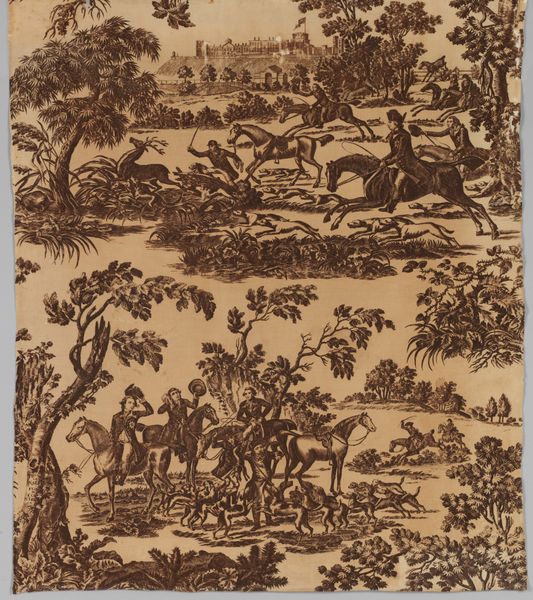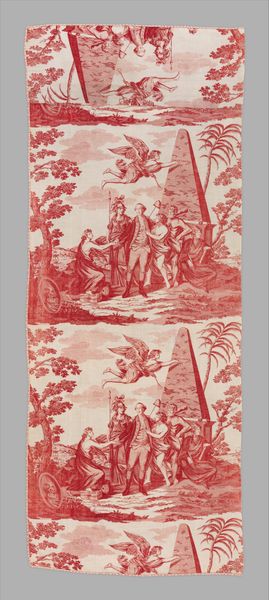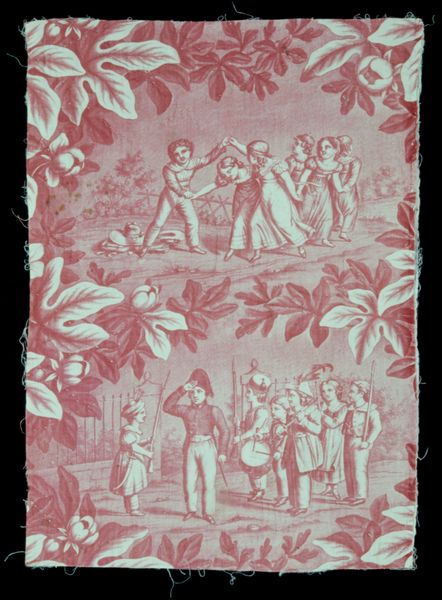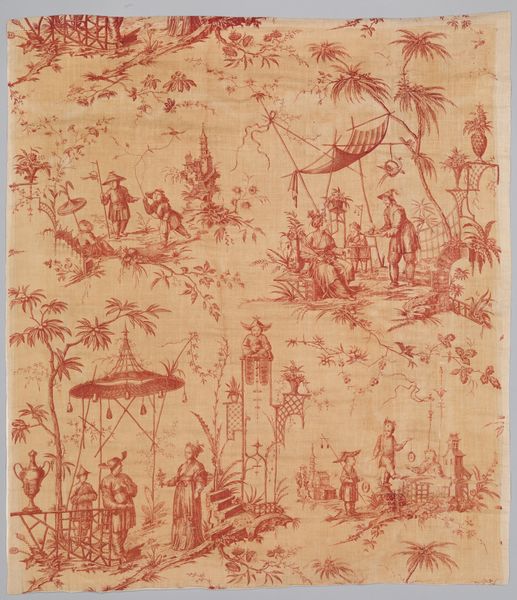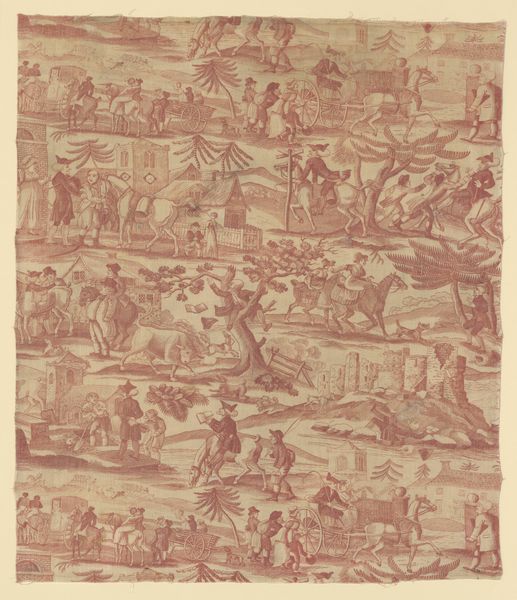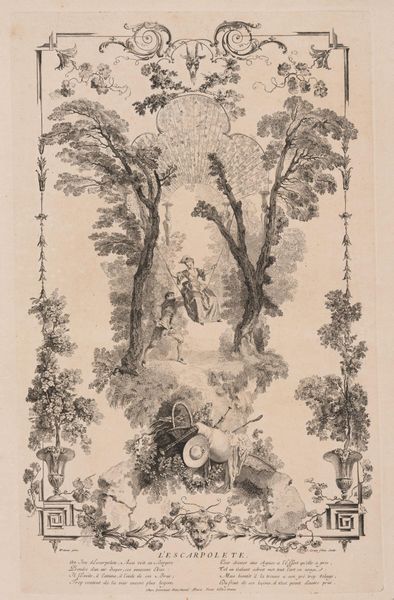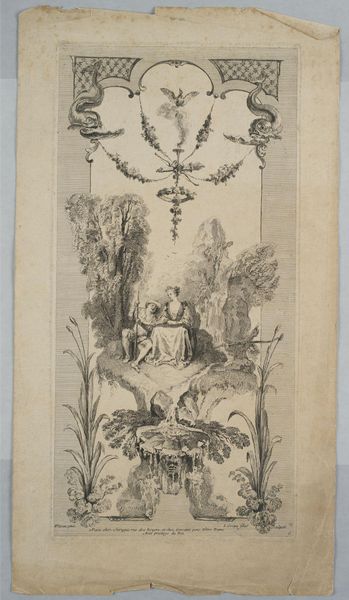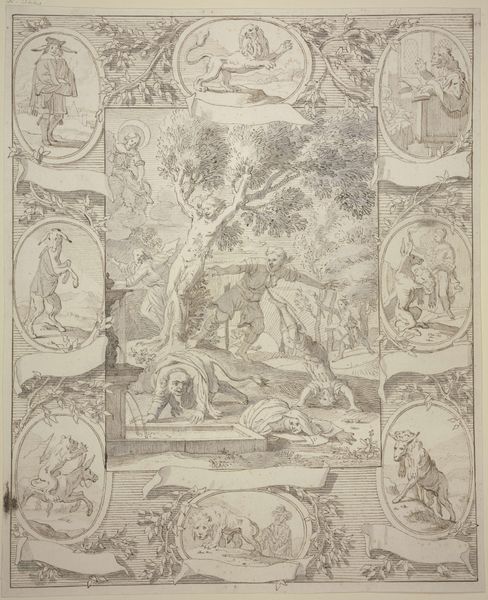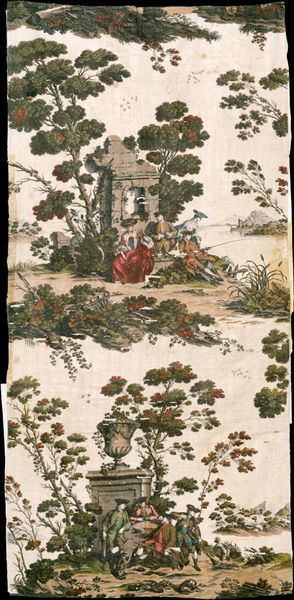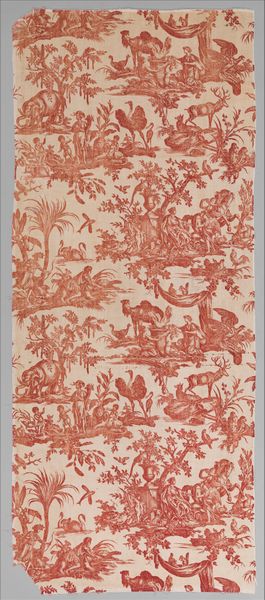
Copper plate printed cotton with King George III and his family 1780 - 1790
0:00
0:00
print, etching, textile, engraving
# print
#
etching
#
landscape
#
textile
#
genre-painting
#
history-painting
#
textile design
#
decorative-art
#
imprinted textile
#
engraving
Dimensions: H. 35 x W. 29 inches 88.9 x 73.7 cm
Copyright: Public Domain
Curator: What a charming tableau! This copperplate printed cotton, dating from 1780 to 1790, showcases King George III and his family. Editor: It possesses a delicate quality, doesn't it? The monochromatic palette and detailed etching evoke a dreamlike serenity, yet also a certain formality. Curator: Precisely. The textile itself, as a medium, served a vital role in disseminating political imagery during that era. Its narrative scope reaches beyond mere depiction to engage broader socio-cultural currents. Editor: Yes, the repetition of scenes is intriguing. Notice how groups are arranged within a landscape? The visual rhythm contributes to a decorative pattern that cleverly disguises a potent political message. What is particularly striking is the rendering of the figures and their subtle positioning relative to Windsor Castle. Curator: The scenes aren’t random of course. J. Seymour, the artist responsible for the engraving, very likely intended each visual element to communicate royal virtues of family life. Domesticity became a potent emblem of national stability in the face of social unrest. Editor: A sort of propagandistic aesthetic perhaps? To promote an idealized version of royalty within private homes. It is also interesting to me, structurally, that we can examine it through an array of images to be decoded, symbols that denote social and political meanings from that era. Curator: The choice of cotton is critical to this point. Easily produced in Lancashire mills, this textile form makes this potent political imagery available to homes across Britain. As such, this engraving becomes something of a common design element for displaying monarchical endorsement. Editor: I think one is given the rare chance to truly observe the intersection of the intimate and the official, when studying the way decorative textiles display political agendas, what do you think? Curator: Indeed, examining these types of artistic designs, it reveals the ways in which even domestic articles have the potential to both reflect and actively shape public discourse. Editor: I now view it with a better historical understanding and how it successfully captures the public role of art through time. Curator: Agreed, and I admire how this detailed artwork transforms social contexts into artistic forms.
Comments
No comments
Be the first to comment and join the conversation on the ultimate creative platform.
